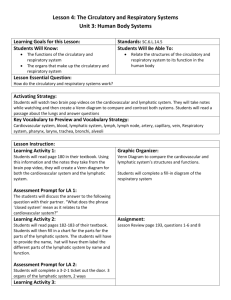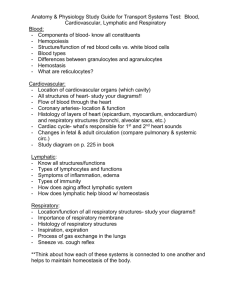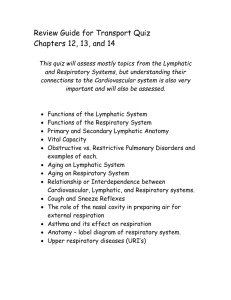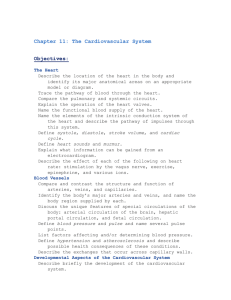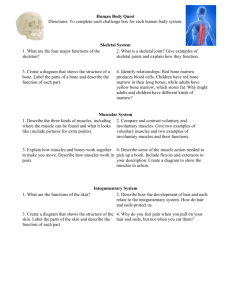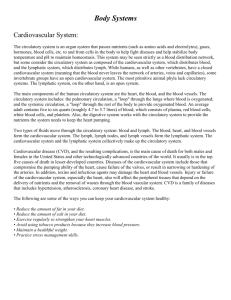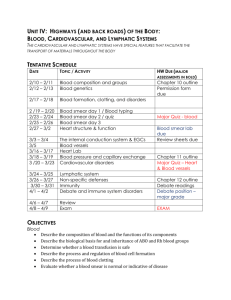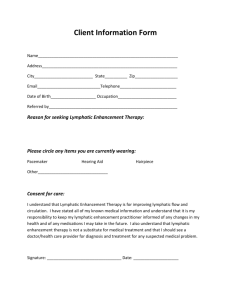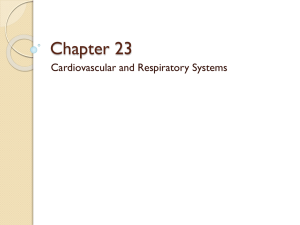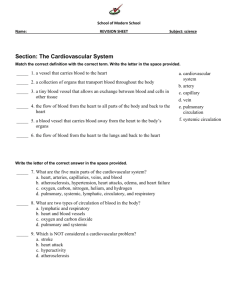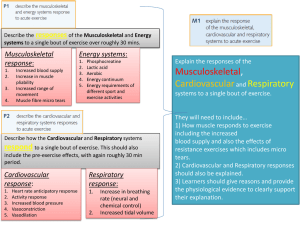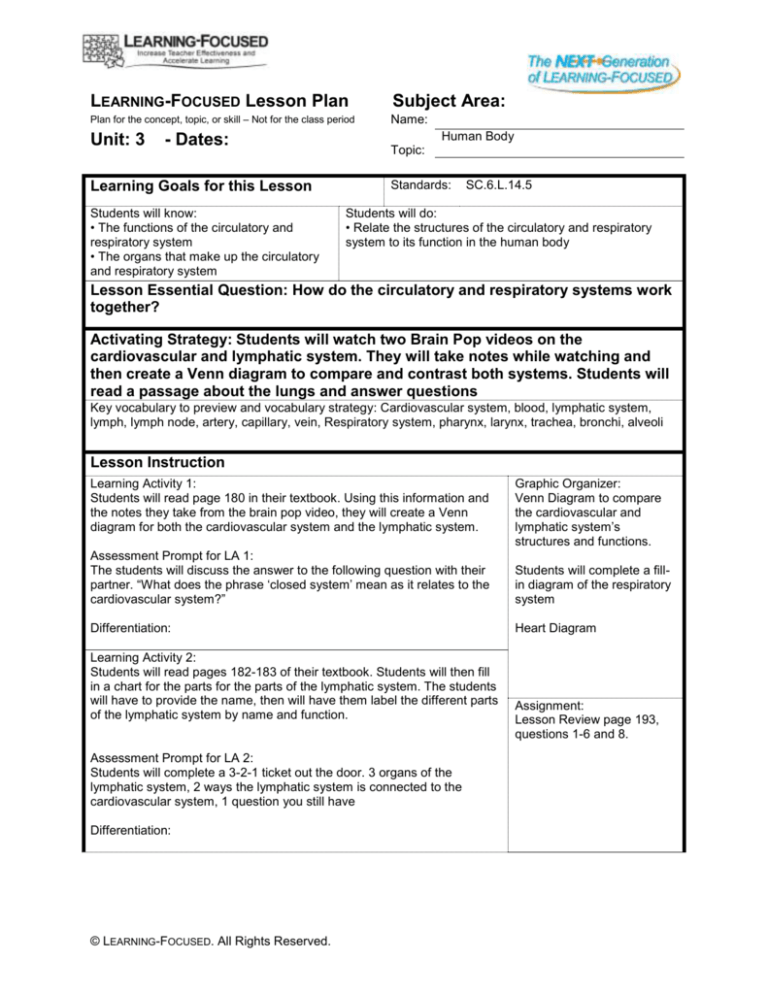
LEARNING-FOCUSED Lesson Plan
Subject Area:
Plan for the concept, topic, or skill – Not for the class period
Name:
Unit: 3
- Dates:
Learning Goals for this Lesson
Students will know:
• The functions of the circulatory and
respiratory system
• The organs that make up the circulatory
and respiratory system
Human Body
Topic:
Standards:
SC.6.L.14.5
Students will do:
• Relate the structures of the circulatory and respiratory
system to its function in the human body
Lesson Essential Question: How do the circulatory and respiratory systems work
together?
Activating Strategy: Students will watch two Brain Pop videos on the
cardiovascular and lymphatic system. They will take notes while watching and
then create a Venn diagram to compare and contrast both systems. Students will
read a passage about the lungs and answer questions
Key vocabulary to preview and vocabulary strategy: Cardiovascular system, blood, lymphatic system,
lymph, lymph node, artery, capillary, vein, Respiratory system, pharynx, larynx, trachea, bronchi, alveoli
Lesson Instruction
Learning Activity 1:
Students will read page 180 in their textbook. Using this information and
the notes they take from the brain pop video, they will create a Venn
diagram for both the cardiovascular system and the lymphatic system.
Graphic Organizer:
Venn Diagram to compare
the cardiovascular and
lymphatic system’s
structures and functions.
Assessment Prompt for LA 1:
The students will discuss the answer to the following question with their
partner. “What does the phrase ‘closed system’ mean as it relates to the
cardiovascular system?”
Students will complete a fillin diagram of the respiratory
system
Differentiation:
Heart Diagram
Learning Activity 2:
Students will read pages 182-183 of their textbook. Students will then fill
in a chart for the parts for the parts of the lymphatic system. The students
will have to provide the name, then will have them label the different parts
of the lymphatic system by name and function.
Assessment Prompt for LA 2:
Students will complete a 3-2-1 ticket out the door. 3 organs of the
lymphatic system, 2 ways the lymphatic system is connected to the
cardiovascular system, 1 question you still have
Differentiation:
© LEARNING-FOCUSED. All Rights Reserved.
Assignment:
Lesson Review page 193,
questions 1-6 and 8.
Learning Activity 3: Read pages 184-185,187 and take Cornell Notes.
Students will label the parts of the heart and flow of blood on a heart
diagram.
Assessment Prompt for LA 3:
Students will work with a partner to create a heart model using provided
materials. (modeling clay, construction paper, pipe cleaners, plastic or
rubber tubing, or other usable materials). Then present their models to
their table and Gallery walk the class.
Differentiation:
__________________________________________________________
Learning Activity 4:
Students will read through pages 189-191 and take their own Cornell
notes using a guide.
Assessment Prompt for LA4:
Students will answer various questions about the pulmonary and systemic
circuit and how circulation maintains homeostasis.
Differentiation:
Summarizing Strategy: Students will read a passage about the heart and answer
questions using the information they just read.
Students will participate in a lab that will have them create and observe a model
of lung out of a Ziploc bag and a coffee can/ bottle. Students will write their
observations and write to inform an absent student.
Student
Modification/Accommodations
1. Seat student near teacher.
2. Stand near student when giving
directions/presenting.
3. Provide visual aids/graphic organizers.
4. Ensure oral directions are understood.
5. Allow extra time to complete tasks.
6. Simplify complex written directions.
7. Give test items orally.
8. Provide peer assistance/study groups.
© LEARNING-FOCUSED. All Rights Reserved.

